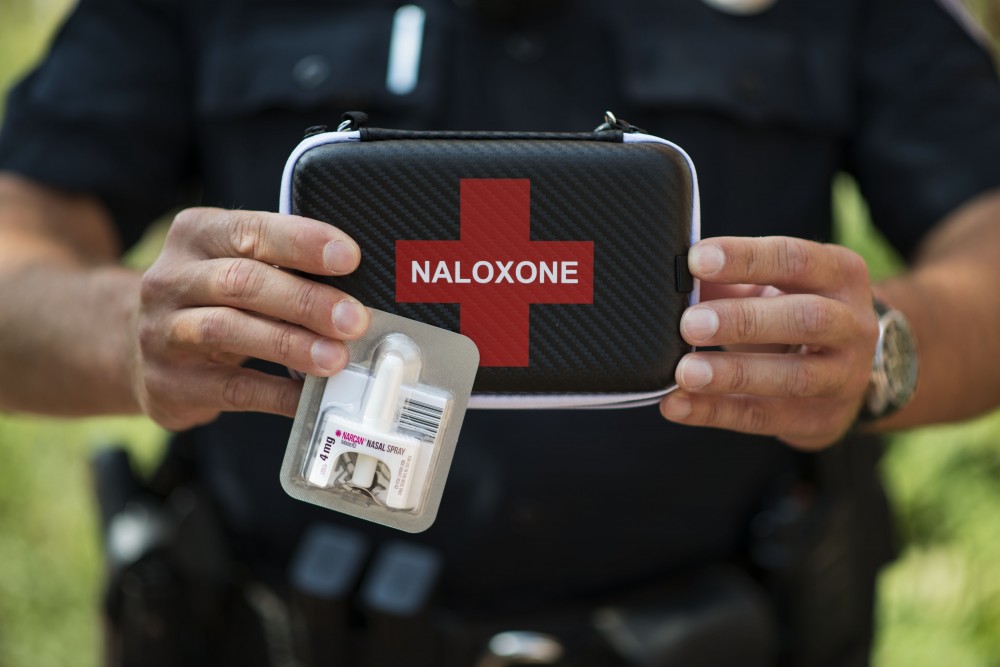University of Minnesota police will begin carrying naloxone, a narcotic overdose-reversing drug, this week in hopes of keeping students and those passing through campus safe.
The University of Minnesota Police Department’s roll-out follows the example of the Minneapolis police and fire departments, who also moved to carry the drug in response to increased overdoses in the Twin Cities in recent years. While opioid overdoses don’t pose a significant problem for UMPD, officials say it’s important to keep up with neighboring departments and citywide efforts.
“Despite the reported uptick in opioid overdoses in the metro, campus has not seen a spike in drug use or overdoses,” said UMPD Chief Matt Clark.
In the past two years, UMPD officers responded to one opioid overdose. As it was an accidental overdose of a non-student, Clark said the department needs to be equipped to serve the larger community.
“With hospital and light rail and everything else, we know that the folks we serve aren’t always part of the campus community,” Clark said.
Each UMPD officer will initially receive two doses of the drug, also called Narcan, to be stored in squad cars.
Before receiving Narcan kits, officers must complete a three-hour training where they learn how to identify an overdose and administer the nasal spray. If the roll-out is successful, campus security officers could also carry Narcan, Clark said.
The Minneapolis Police Department finished training around 700 officers in early September after beginning a Narcan pilot program in March. Since then, MPD officers have used Narcan 14 times, according to MPD Sgt. Griffin Hillbo.
Minneapolis Fire Department engines have had Narcan since 2016. Before UMPD’s Narcan initiative, nearby MPD officers or firefighters would have responded to overdoses.
Now with three agencies armed with Narcan, overdose responses will come from whoever arrives first.
“Really it comes down to wanting to get that person help as soon as you can,” said MFD Assistant Chief of Administration Bryan Tyner. “Whoever gets there first will probably be the one to actually administer the Narcan.”
Jason Varin, interim associate dean for professional and external relations in the University’s College of Pharmacy, said he was surprised UMPD officers did not already carry Narcan because the drug is relatively safe and easy to administer.
Opioids trigger the body’s receptors to produce a feeling of euphoria, and overdoses often result in toxic amounts of carbon dioxide. When Narcan is administered to someone who has overdosed, receptors latch onto naloxone molecules like they would opioids.
Depending on the severity of the overdose, users can have only minutes to get help, so Varin said that window of time can be critical.
“If somebody goes down from shooting up heroin or some of these stronger drugs, they don’t have a lot of time,” Varin said. “The problem is that a couple minutes can be the difference between life and death, literally.”














